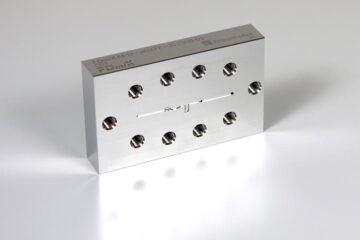Virtual robot outlines damaged heart muscle

In a joint project with the STW Technology Foundation, medical information technologists from Leiden have developed a virtual robot which meticulously scans the heart muscle using images of the heart. The contours detector reduces the work of specialists and does not affect the patients. The research group will present the results in the middle of May at a congress in Honolulu.
To map the condition of a patient’s heart, physicians have until now used a series of MRI images (magnetic resonance imaging). The images provide 10 cross-sections of the heart on 20 phases during a single heartbeat. Then on at least 40 of the 200 images the physician marks the contours of the heart muscle by hand. This very accurately but subjectively reveals where the heart muscle is less thick during the heartbeat. These parts of the heart wall have already died or receive less oxygen upon exertion. If the physician requires more information, he marks all 200 images.
In the newly-developed contours detector, a virtual robot delineates the heart boundaries on the MRI images. The contours indicate where the heart wall lies and therefore the thickness of the heart muscle at any given point. The robot is objective and self-learning. When the image has too little contrast for a boundary line to be drawn with certainty, the robot ’remembers’ an example from a previous `training`. Together with the rules dictated by the programmers, the intelligent system then constructs a ‘surgically precise’ contour. This makes the time-consuming drawing of the contours by hand obsolete. Patients are not even aware of the robot, as the entire process takes place in the computer using stored MRI images.
The robot moves like a car along the heart wall, drawing the contours on the images as it goes. The size, speed and minimum turning circle of the virtual vehicle are adjusted by the researchers to the individual properties of the patient’s heart, such as the weight and the amount of blood the heart can pump. Sensors on the front and side of the robot help it to navigate ‘safely’ so that it does not collide with the wall.
In this joint project with the STW Technology Foundation, the researchers from Leiden University Medical Center limited themselves to the automatic outlining of the left ventricle in the heart because this pumps blood to the body.
Media Contact
All latest news from the category: Health and Medicine
This subject area encompasses research and studies in the field of human medicine.
Among the wide-ranging list of topics covered here are anesthesiology, anatomy, surgery, human genetics, hygiene and environmental medicine, internal medicine, neurology, pharmacology, physiology, urology and dental medicine.
Newest articles

FDmiX: Fast, robust series production of nanoparticles
Nucleic acid-based medications such as mRNA vaccines are opening up new therapeutic approaches. These active ingredients must be enclosed inside nanoparticles to ensure that they get to where they are…

Sensor measures oxygen content of breath
Oxygen saturation in the blood that is either too low or too high can cause physical harm or even death. This is why patients’ oxygen concentraions are monitored continuously in…

Laser immersion probe for smart inline monitoring of water and wastewater
A new type of laser-based immersion probe, which the Fraunhofer Institute for Laser Technology ILT in Aachen is testing as part of BMBF- and EU-funded projects with industrial partners and…





















